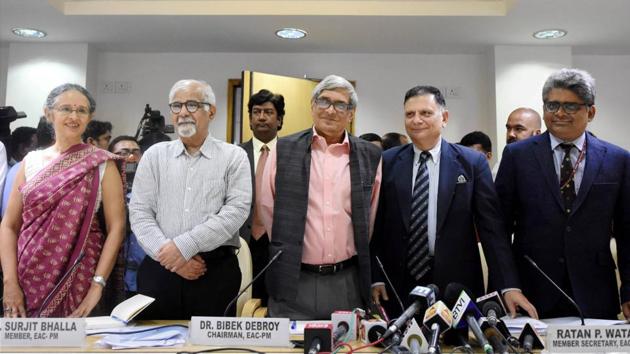There’s no shortcut to growth: Indian economy’s revival will need more than temporary stitches
An analysis of latest Labour Bureau points to an absolute decline in formal employment between 2013 and 2016, for the first time in many decades
This past week, Prime Minister Narendra Modi’s newly appointed Economic Advisory Council held its first meeting to discuss ways to revive economic growth and accelerate creation of new jobs. Going by news reports, the Council appears to be in no hurry to recommend quick fixes. It has refrained from responding to demands for fiscal stimulus or cuts in interest rates. Instead, it has chosen to look deeper into issues in key sectors and explore solutions in consultation with agencies and authorities administering those sectors.

This is a good start for the Council. As this column has argued earlier, the problems confronting the Indian economy at this point are largely structural, not cyclical. There are no easy answers or quick solutions. It will be prudent to think through what needs to be done and how. Moreover, if the objective is also to create and sustain jobs that the country needs, it is important to ask why employment generation lost pace even through the years when the economy grew rather fast.
Labour Bureau data point to a steady deceleration in employment growth through 2001 to 2010, stagnation in the following three years and a contraction in jobs since 2013. To be sure, there are issues with the data, especially on account of its coverage being limited to the formal sector and smaller sample sizes. Still, a comparison of the data over time throws up some interesting trends.
In the early years of the millennium, employment growth was driven by rapid expansion in sectors such as construction, food and food products, basic metals, machinery and equipment, IT outsourcing and financial and communication (mobile phone) services. These sectors also drove the broader economy that posted the best growth in the period between 2003 and 2008. But the pace of employment generation even in these sectors also slowed because of a secular increase in mechanisation and automation. Some of these sectors tend to employ fewer incremental labour as their scale grows.
As a result, when a financial crisis hit the world economy in 2008 and these sunshine sectors, some of which were riding on the back of global demand, began to slow down, new employment opportunities shrunk. The Indian economy was growing, but was not creating jobs. The years from 2010 to 2013, came to be known as a period of jobless growth.
India had responded to the 2008 crisis with significant fiscal stimulus through across-the-board tax concessions and increased social spending. Those measures did help businesses keep their bottom lines healthy and the GDP bounce back to high growth in 2010-11, but as is evident now the impact was temporary.
The structural weaknesses, in fact, worsened in the following years. In an article disaggregating the performance of manufacturing sector over the past five years, I had pointed out how nearly half a dozen sectors had slipped into a contraction mode. They have been hit by multiple factors, from finance crunch to cheaper imports.
In other words, the best performing sectors during the boom years have come to be worst performing now. The resulting loss or lack of jobs has not been offset by new jobs in sectors or economic activities that might be getting reckoned as top performers in recent years.
The implication of this is corroborated by a recent analysis of the Labour Bureau data by Vinod Abraham, who teaches economics at Thiruvananthapuram-based Centre for Development Studies. Abraham estimates an absolute decline in formal employment between 2013-16, perhaps for the first time in the history of independent India.
The point that I am trying to make is that the Indian economy faces some serious constraints to grow at an accelerated pace. The prime minister’s advisory council is aware of this and is willing not to give into short term temptations , but that isn’t going to be enough. Others in the government will have to be sensitised.





